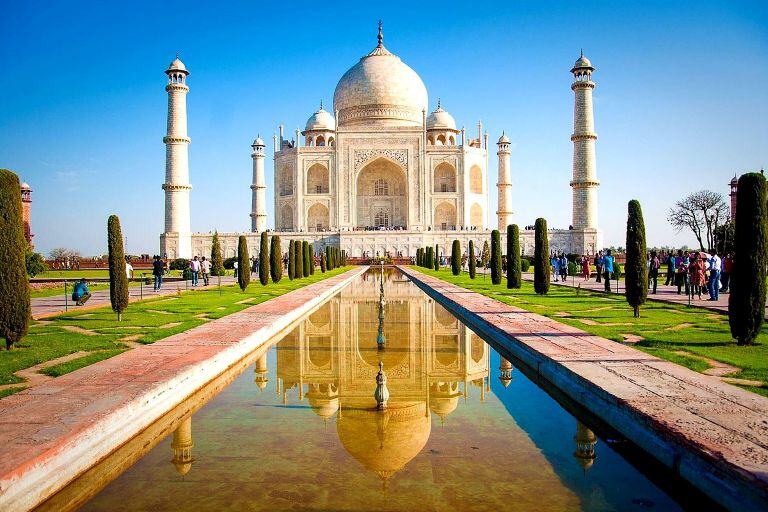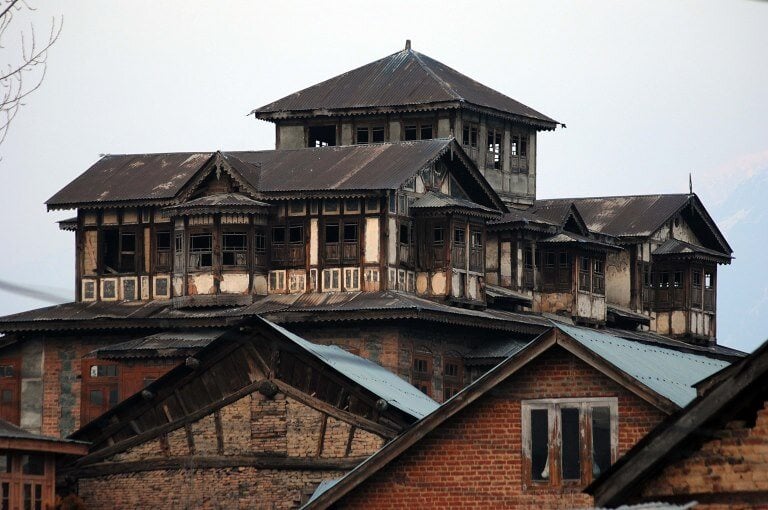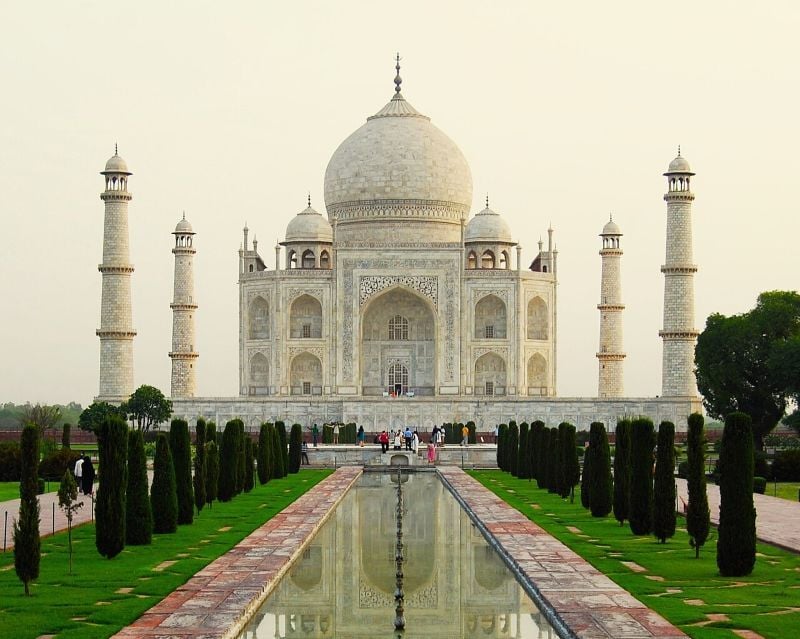
India boasts a rich building legacy of centuries of rule, religion, and regional influence. Of these, the Mughal art and architecture may stand out for the unique combination of Islamic, Persian, Turkish, and Indian components. These buildings—among the best constructed in the subcontinent—serve religious or governmental ends and reflect a vision of empire-building on a large scale.
From stunning forts to finely crafted tombs and palaces, Mughal architecture in India remains a magnet for scholars, researchers, and tourists. It has impressive scale and symmetry, impeccable attention to detail, and application of innovative construction methods that have guided Indian architecture for generations.
This blog explores the key features of Mughal architecture, the historical context of this design era, and ten of the most famous examples that today set the standard for the art and architecture of the Mughal Empire.
History of Mughal Art & Architecture
The Mughal Empire architecture was in full bloom between the 16th and 18th centuries, starting from Babur and reaching full prominence under Shah Jahan. Babur brought Timurid styles to India, although his grandson modernised the art and architecture during Akbar’s era by promoting a blending of Persian and Hindu traditions.
Akbar’s successors, Jahangir and Shah Jahan, raised the artistic vocabulary to even greater heights. Jahangir introduced elegance and refinement, while Shah Jahan provided us with one of the best-known monuments of Mughal architecture, the Taj Mahal. Aurangzeb, the last of the prominent Mughal rulers, was a more conservative ruler, signalling the end of the era of innovation in this sphere.
These centuries witnessed the emergence of functional Mughal buildings in India that were manifestations of their designers' vision, authority, and spiritual inclination of mind.
Also Read - Evolution of Indian Architecture: From Temples to Skyscrapper
Key Facts About Mughal Architecture

- Time Period: 1526–1857
- Major Emperors: Babur, Akbar, Jahangir, Shah Jahan, Aurangzeb
- Influenced by: Persian, Timurid, Turkish, and Indian styles of architecture.
- Main types of buildings: Mosques, tombs, forts, gardens, and palaces
- Material Utilised: Red sandstone and white marble
- Techniques Employed: Pietra dura, calligraphy, double domes
For those exploring how traditional architecture influences modern digital design, check out Novatr’s homepage for cutting-edge architectural learning opportunities.
Key Features of Mughal Architecture

The knowledge of Mughal architecture features makes it possible to decode the empire's ideology and artistic priorities.
- Symmetry and Geometry: Axial symmetry and geometrical exactitude in layout and elevation.
- Domes and Arches: Bulbous domes, horseshoe arches, and iwans (vaulted halls).
- Minarets: Employed in mosques and for ornate decorations in tombs.
- Decorations: Floral patterns, jaali (latticework screens), and calligraphy in Persian.
- Gardens: Four-part (Charbagh) gardens representing paradise
- Use of Marble and Sandstone: They are frequently used for contrast and visual effects.
- Double Domes: A method where a secondary inner dome and a larger outer one beautify the inside and the exterior.
These Mughal architectural elements made structures strong, functional, and artistically sophisticated. For those interested in applying real-world applications to future-ready design, consider Novatr’s Computational Design course, which blends creative thought with parametric precision.
10 Striking Examples of Mughal Architecture
1. Taj Mahal, Agra
- Built by: Shah Jahan (1632–1653)
- Architecture Type: Mausoleum
Among all Mughal architectural landmarks, the Taj Mahal is India's most recognised Mughal architecture. The structure combines symmetrical architecture with Quranic inscriptions, marble pietra dura inlays, and ornamental gardens. The Mughals constructed this masterpiece as one of their greatest sculptures of Mughal art and architecture.
2. Red Fort, Delhi
- Built by: Shah Jahan (1639)
- Architecture Type: Fort
Imperial power and military dominance find their expression in this vast fortress complex made of red sandstone. The complex displays elegant pavilions alongside audience halls through which visitors can observe important Mughal architectural features such as intricate arches and detailed surface carvings.
3. Fatehpur Sikri, Uttar Pradesh
- Built by: Akbar (1571)
- Architecture Type: City complex
The former Mughal Capital, Fatehpur Sikri, features several monuments of the Mughal period, such as Buland Darwaza and Diwan-i-Khas. It is a model of art and architecture during Akbar, and this built site demonstrates how Islamic and Hindu design elements came together to create a masterpiece of art and architecture.
4. Humayun’s Tomb, Delhi
- Built by: Haji Begum (1569)
- Architecture Type: Tomb
After its construction, the Mughals adopted this tomb design as the blueprint for following Mughal buildings in India. This building showcases Persian charbagh garden arrangements, double dome elements, and a central chamber design that symbolises the evolution of Mughal architecture elements.
5. Jama Masjid, Delhi
- Built by: Shah Jahan (1656)
- Architecture Type: Mosque
This Indian mosque stands among the biggest religious buildings in the nation by displaying extensive courtyards coupled with giant domes and prominent minarets. This monument of Mughal architecture demonstrates the architectural devotion to religion and innovative design.
6. Itimad-ud-Daulah’s Tomb, Agra
- Built by: Nur Jahan (1628)
- Architecture Type: Tomb
This structure obtained its “Baby Taj” nickname while showing white marble and interior Mughal architecture features such as fine inlay work and jaali screens. This development marked a movement that brought forth better aesthetics combined with precise artistic work.
7. Agra Fort, Uttar Pradesh
- Built by: Akbar (1565)
- Architecture Type: Fort
UNESCO has listed this fort as one that deploys military fortification science alongside refined architectural elements. This famous Mughal architecture showcases military function through their housing of palaces, audience halls, and mosques which also display decorative Mughal architectural features.
8. Bibi Ka Maqbara, Aurangabad
- Built by: Aurangzeb’s son (1678)
- Architecture Type: Mausoleum
The feminine mausoleum Bibi Ka Maqbara displays Mughal architectural elements on a modest scale. Having fewer decorative elements, the site keeps essential symmetrical designs, domes, and charbagh building plan principles intact.
9. Shalimar Bagh, Srinagar
- Built by: Jahangir (1619)
- Architecture Type: Garden
The Persian charbagh design principles of symmetry, water channels, and steep terrain define the paradise theme at Shalimar Bagh. Garden planning during the rule of the Mughal Empire manifested itself prominently as a traditional Mughal Empire architecture feature of this period.
10. Tomb of Akbar the Great, Sikandra
- Built by: Akbar’s son (1605–1613)
- Type: Tomb
Conclusion
Mughal art and architecture inspired modern design practices, educational systems, and cultural thinking. The buildings showcase imperial ambition while illustrating the dominance of an empire across significant territories of the Indian subcontinent. Architects, designers, and students continue to derive essential principles from these architectural masterpieces of planning, aesthetics, and craftsmanship.
To build deeper expertise in digital design inspired by historical frameworks like Mughal architecture in India, consider enrolling in Novatr’s industry-relevant courses. The Building Information Modelling (BIM) for Architects course offer project-based learning and mentorship from global professionals.
With hands-on experience and placement support, these courses can redefine your career in the AEC industry. Visit Novatr to explore more and start your upskilling journey today. For AEC insights and updates, explore our resource page.
Was this content helpful to you



.jpg)






.png)
